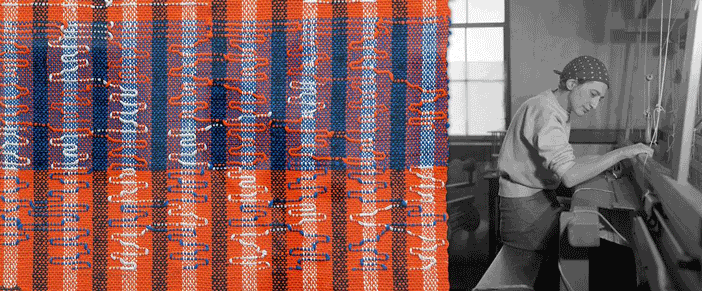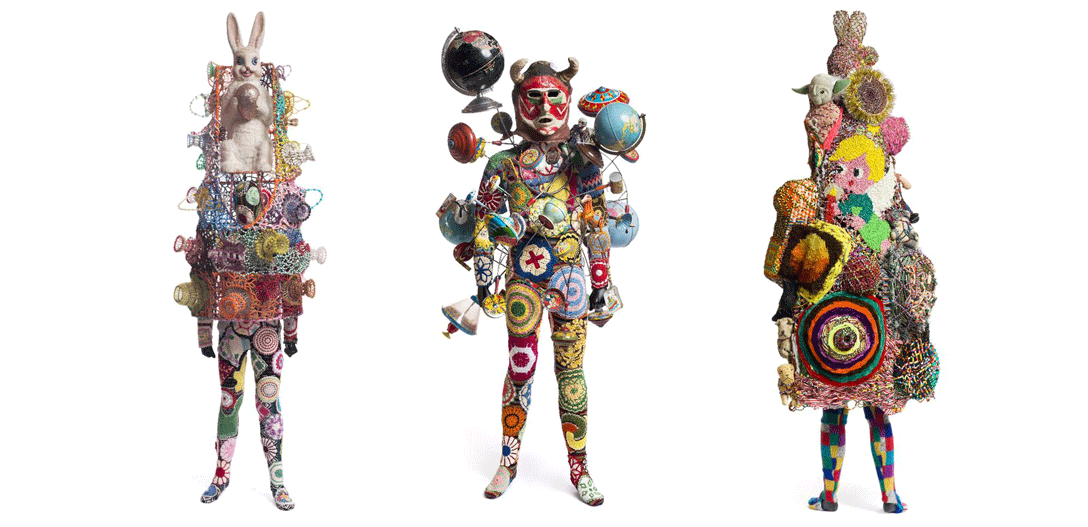With interest in fibre arts increasing over the past few years, the conversation of their distinction of “high art” continues to be debated. Historically, high art is considered to be arts consumed by the elite class of society. Low arts tend to be those that are consumed by the masses and appeal to the general public. Another distinction between high and low art relates to the medium’s function, most notably the question of aesthetic or formality. It’s important to remember that art has and continues to be created by people across strata of backgrounds. However, for much of early European art history, education and training within these fields were limited. While the terms high and low weren’t always used, they can be interchanged with fine and decorative. Historically, fine arts included painting, sculpture, architecture, and some music, while decorative arts referred to ceramics, furniture, jewelry, and textile arts.
This arbitrary rubric puts textile arts, particularly tapestry, in an interesting place. Historically, tapestries were only commissioned from artisan guilds by the wealthy, using exotic materials and dyes that were only available to the elite. Tapestries, besides their sound dampening and draft-quelling qualities, have about as much function as a painting on a wall. Yet, there are schools of thought where weaving would belong in the low arts because the act of creating it is accessible by common people. Since other textile arts like sewing, knitting, crochet, and embroidery have been and are still considered “low art,” it is difficult to find the differentiating factor.
The distinction between fine art and decorative art blurred during the Arts and Crafts movement during the late 1800s and early 1900s. With the rise of industrialization, a new appreciation for high craftsmanship rose as well. One school in particular that embraced this new materiality in their curriculum was the Bauhaus school in Germany. The Bauhaus pulled together many different vocations of art under one roof, and considered them all mostly equal. Unusual for the time, The Bauhaus accepted women into their programs as well. While this step towards allowing women into the art space proved admirable, they were still pushed to study what could be traditionally called “feminine arts.”

One such student, Anni Albers, joined the school in the weaving department. Her work triggered a deeper conversation on the modern place of textile arts in the arts community. Seen in some circles as the mother of textile arts, she inspired generations of textile artists to come.

In the early sixties, textile arts came back into fashion during the Back to the Earth movement. This movement was inspired by the desire to live off the land, and be more self-sufficient. The resurgence pushed for more practical arts, or “crafts.” However, there are always artists who will take a medium and transform it. In 2014, the Boston Institute of Contemporary Arts held an exhibition of textile artists from the 1960s forward. Artworks ranged from tapestry to crochet, although critics mentioned that some textile arts like quilting, embroidery, etc. were strangely omitted from the exhibit.
When exploring these pieces, it’s easy to remove the thought of them as “useful” or decorative, and move into the more theoretical and aesthetic side of art. Using the previous rubric, this would shift textile arts into “high art.” However, there are still people who would argue that its designation as a craft.
Textile arts can be “high art” if they don’t serve a function, but once a function enters the equation it’s relegated to craft. Where does wearable sculpture go? Nick Cave’s soundsuits are technically functional, though maybe not practical in a day to day sense. Where does the art world put this type of work?

This exploration of where textile arts fit into the high art v. low art dichotomy has only highlighted one thing. The line is subjective, and frequently dictated by class and the elite. Too often, art that is made by marginalized people gets swept into the “low art” category. Even when the scope of high arts changes over time, it only seems to exacerbate the long-lasting disparity of the arts world.
With the expansion of access to the internet, materials, and resources, this false narrative will surely change. It’s important that individuals and organizations keep pushing for equity among artists, and rather than create exclusionary boundaries, encouraging creation, in every media. Speaking of function, there is no function in separating art categories into high art and low art, or fine art and craft. If an art piece tells a story, makes someone think, or provides a new viewpoint, it’s important and deserves a place of honor. These outdated ways of thinking are harmful and reinforce an imperialist narrative that doesn’t belong in the 21st century.
